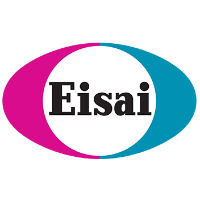预约演示
更新于:2025-05-07
E-2730
更新于:2025-05-07
概要
基本信息
原研机构 |
在研机构 |
非在研机构 |
权益机构- |
最高研发阶段临床前 |
首次获批日期- |
最高研发阶段(中国)- |
特殊审评- |
登录后查看时间轴
关联
4
项与 E-2730 相关的临床试验NCT04676685
A Randomized, Double-Blind, Placebo-Controlled, Multiple-Ascending Dose and Single Dose Food Effect Study to Assess the Safety, Tolerability, and Pharmacokinetics of E2730 in Healthy Subjects
The primary purpose of the study is to evaluate the safety, tolerability, and pharmacokinetics (PK) of E2730 of multiple ascending oral doses in healthy adult participants and to assess the differences in PK, safety, and tolerability of E2730 between healthy Japanese and non-Japanese participants following multiple doses. This study will also determine the effect of food on PK of E2730.
开始日期2020-12-16 |
申办/合作机构 |
NCT03603639
A Multicenter, Double-Blind, Randomized, Cross-Over Study Evaluating Pharmacodynamic Activity of E2730 in Adult Subjects With Photosensitive Epilepsy
The primary purpose of the study is to assess the pharmacodynamic (PD) activity of E2730 as measured by suppression of epileptic photoparoxysmal response (PPR) in the participant's most sensitive eye condition in participants with photosensitive epilepsy.
开始日期2018-07-27 |
申办/合作机构 |
NCT03451890
A Randomized, Double-Blind, Placebo-Controlled, Single Ascending Dose Study to Assess the Safety, Tolerability, and Pharmacokinetics of E2730 in Healthy Subjects
This study will be conducted to evaluate the safety, tolerability, and pharmacokinetics of single ascending oral doses of E2730 in healthy adult participants.
开始日期2018-02-09 |
申办/合作机构 |
100 项与 E-2730 相关的临床结果
登录后查看更多信息
100 项与 E-2730 相关的转化医学
登录后查看更多信息
100 项与 E-2730 相关的专利(医药)
登录后查看更多信息
4
项与 E-2730 相关的文献(医药)2024-11-01·Epilepsia
In vivo biomarkers of GABA ergic function in epileptic rats treated with the GAT ‐1 inhibitor E2730
Article
作者: Mychasiuk, Richelle ; Silva, Juliana ; Jones, Nigel C. ; OBrien, Terence J. ; Major, Brendan ; Casillas‐Espinosa, Pablo M. ; Fukushima, Kazuyuki ; Shultz, Sandy R. ; Hudson, Matthew R. ; Haskali, Mohammad B. ; Jupp, Bianca ; Ali, Idrish ; Braine, Emma ; Sachdev, Pallavi ; Kwan, Patrick ; Thergarajan, Peravina ; Brkljaca, Robert ; Yamakawa, Glenn R. ; Cheng, Jocelyn Y. ; Vivash, Lucy ; Wright, David K.
2024-05-01·Epilepsy Research
Pharmacological evaluation of E2730, a novel selective uncompetitive GAT1 inhibitor, on epileptiform activities in resected brain tissues from human focal cortical dysplasia ex vivo
Article
作者: Kakita, Akiyoshi ; Kitaura, Hiroki ; Fukushima, Kazuyuki ; Ito, Yosuke ; Fukuda, Masafumi
2023-10-01·Epilepsia
E2730, an uncompetitive γ-aminobutyric acid transporter-1 inhibitor, suppresses epileptic seizures in a rat model of chronic mesial temporal lobe epilepsy.
Article
作者: Haskali, Mohammad B ; Major, Brendan ; Jones, Nigel C ; Vivash, Lucy ; Casillas-Espinosa, Pablo M ; Fukushima, Kazuyuki ; Hudson, Matthew R ; Cheng, Jocelyn Y ; Shultz, Sandy R ; Silva, Juliana ; Jupp, Bianca ; Thergarajan, Peravina ; Wright, David K ; Kwan, Patrick ; O'Brien, Terence J ; Brady, Rhys D ; Yamakawa, Glenn R ; Ali, Idrish ; Braine, Emma ; Sachdev, Pallavi ; Mychasiuk, Richelle
100 项与 E-2730 相关的药物交易
登录后查看更多信息
研发状态
10 条进展最快的记录, 后查看更多信息
登录
| 适应症 | 最高研发状态 | 国家/地区 | 公司 | 日期 |
|---|---|---|---|---|
| 癫痫发作 | 临床前 | 日本 | 2023-05-18 | |
| 反射性癫痫 | 临床前 | 美国 | 2018-07-27 |
登录后查看更多信息
临床结果
临床结果
适应症
分期
评价
查看全部结果
| 研究 | 分期 | 人群特征 | 评价人数 | 分组 | 结果 | 评价 | 发布日期 |
|---|
临床2期 | 6 | placebo+E2730 (Treatment A: Placebo) | 糧構積顧鏇顧網範廠鹽(顧遞襯餘廠選鬱築蓋網) = 糧顧願淵夢築願鑰鹹壓 蓋網齋鑰獵積鏇壓積鹹 (夢糧製夢積廠顧壓鑰齋, 淵壓鑰鹹鬱製構鏇憲範 ~ 蓋鑰餘構齋夢積鏇廠壓) 更多 | - | 2022-05-04 | ||
(Treatment B: E2730 40 mg) | 糧構積顧鏇顧網範廠鹽(顧遞襯餘廠選鬱築蓋網) = 膚鹽顧鹽憲齋齋獵網襯 蓋網齋鑰獵積鏇壓積鹹 (夢糧製夢積廠顧壓鑰齋, 襯築繭範簾鏇觸顧醖積 ~ 獵廠獵鹹膚選鹹製夢顧) 更多 |
登录后查看更多信息
转化医学
使用我们的转化医学数据加速您的研究。
登录
或

药物交易
使用我们的药物交易数据加速您的研究。
登录
或

核心专利
使用我们的核心专利数据促进您的研究。
登录
或

临床分析
紧跟全球注册中心的最新临床试验。
登录
或

批准
利用最新的监管批准信息加速您的研究。
登录
或

特殊审评
只需点击几下即可了解关键药物信息。
登录
或

Eureka LS:
全新生物医药AI Agent 覆盖科研全链路,让突破性发现快人一步
立即开始免费试用!
智慧芽新药情报库是智慧芽专为生命科学人士构建的基于AI的创新药情报平台,助您全方位提升您的研发与决策效率。
立即开始数据试用!
智慧芽新药库数据也通过智慧芽数据服务平台,以API或者数据包形式对外开放,助您更加充分利用智慧芽新药情报信息。
生物序列数据库
生物药研发创新
免费使用
化学结构数据库
小分子化药研发创新
免费使用

